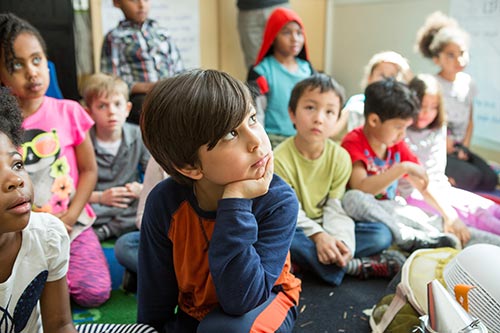“Had we but world enough and time…” wrote Andrew Marvell, an English poet in the late 1600s (He also had another job, highly relevant to this blog, which I will reveal at the end. No peeking!).
Marvell’s poem was about making the most of the limited time we have on Earth. In education, we understand this sentiment. Time is a key resource for teaching, not to be wasted under any circumstances.

In fact, educators have long tried to improve students’ achievement by increasing their time in school. In particular, struggling students have been invited or required to attend after school or summer school classes.
Many school reformers have advocated expanded opportunities for extra-time instruction, as solutions to the learning losses due to Covid-19 school closures. In fact, the current draft of the Democrats’ relief bill emphasizes investments in after school and summer school programs to help these students catch up. Yet these very expensive efforts have not had much impact on reading or math learning in studies done before Covid, and are not likely to have much impact now (see my previous blog on this topic).
How can this be? Summer school, for example, offers several weeks of extra teaching in small classes tailored to the learning levels of the students. Yet summer school for reading has been completely ineffective, except for tutoring phonics in K-1. Math summer school studies involving disadvantaged and low-achieving students also found effect sizes near zero (Xie et al., 2020).
With respect to after-school programs, a review by Kidron & Lindsay (2014) found average effect sizes near zero.
A study in Milwaukee by Heinrich et al. (2009) of after school programs provided under Supplemental Education Services (SES) funding found effect sizes near zero for middle and high school students. The authors investigated the reasons for these disappointing findings. Among eligible students, 57% registered in the first year, dropping to 48% by the fourth year. Yet the bigger problem was attendance. As a percent of registered students, attendance dropped from 90% in the first year to 34% in the fourth, meaning that among all eligible students, only 16% attended in the final year. This abysmal attendance rate should not be surprising in light of the observation in the study that most of the after-school time was spent on worksheets, with little or no instruction. The Heinrich et al. (2009) paper contained the following depressing sentence:
“…one might also speculate that parents and students are, in fact, choosing rationally in not registering for or attending SES.” (p. 296).
Reviews of research on the impacts of all approaches to SES find average effects that are appalling (e.g., Chappell et al., 2011). I will write more about SES as a cautionary tale in a later blog, but one conclusion important to the blog is clear: Providing educational programs to struggling students after school or in the summer is unlikely to improve student achievement.
The reasons that additional time after school or in the summer does not enhance achievement is obvious, if you’ve ever been a teacher or a student. No one wants to be sitting in school while their friends are out playing. Extra time approaches that simply provide more of the same are probably boring, tedious, and soul-sapping. Imagine kids watching the clock, quietly cheering for every click. It is no wonder that students fail to register or fail to attend after school or summer school sessions, and learn little in them if they do.
The poet Andrew Marvell had it right. What is important is to make effective use of the time we have, rather than adding time. And his profession, other than being a poet? He was a tutor.
References
Chappell, S., Nunnery, J., Pribesh, S., & Hager, J. (2011). A meta-analysis of Supplemental Education Services (SES) provider effects on student achievement. Journal of Education for Students Placed at Risk, 16 (1), 1-23.
Heinrich, C. J., Meyer, R., H., & Whitten, G. W. (2010). Supplemental Education Services under No Child Left Behind: Who signs up and what do they gain? Education Evaluation and Policy Analysis, 32, 273-298.
Kidron, Y., & Lindsay, J. (2014). The effects of increased learning time on student academic and nonacademic outcomes: Findings from a meta‑analytic review (REL 2014-015). Washington, DC: U.S. Department of Education, Institute of Education Sciences, National Center for Education Evaluation and Regional Assistance, Regional Educational Laboratory Appalachia.
Xie, C., Neitzel, A., Cheung, A., & Slavin, R. E. (2020). The effects of summer programs on K-12 students’ reading and mathematics achievement: A meta-analysis. Manuscript submitted for publication.
This blog was developed with support from Arnold Ventures. The views expressed here do not necessarily reflect those of Arnold Ventures.
Note: If you would like to subscribe to Robert Slavin’s weekly blogs, just send your email address to thebee@bestevidence.org.



